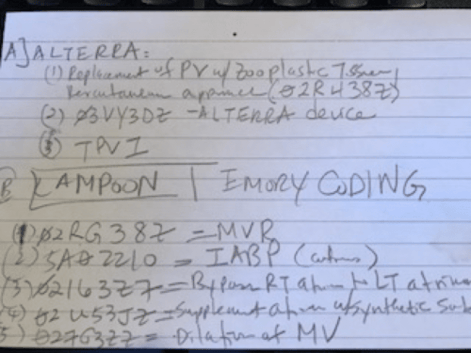This week, we talked with Amy Pang, RHIA, CCS, Coding Specialist with Health Information Associates, about the steps she takes to find her routine.

Amy Pang, RHIA, CCS is a Coding Specialist at Health Information Associates.
Q: Describe in detail your daily routine.
A: I like to work later hours. My most productive hours are between 11 a.m. and 11 p.m. The key for me is to get as much quality sleep as I can – getting good rest allows me to think more clearly. I like to get my errands done in the morning so that I can focus all of my attention on work later in the day.
A few years ago, I read this article from the Harvard Business Review about the ideal work schedule. The article explains that “humans have a well-defined internal clock that shapes our energy levels throughout the day: our circadian process, which is often referred to as a circadian rhythm.” It really spoke to how I work best, which is with a flexible work schedule. Part of the reason HIA is such a great fit for me is because they allow me to set my own schedule and work at hours that optimize my daily energy levels. If you allow your employees to work at your most productive time, then you will get the most out of them. I worked in the restaurant business from the time I was 14 until my early 20’s, and that means I’m used to working and being productive at later hours in the day. So, HIA and our client allows me to set my work schedule for later hours to be my most productive self.
Q: How do you maintain your routine day after day, week after week?
A: Quite a bit has to do with how fast I read and skim the records. To be honest, I am surprised I am one of our most productive coders but am very honored to be on this list. HIA hires the best of the best! Which is another reason I have stuck around for almost 15 years. I work with amazing, smart and caring people; they always have my back.
Additionally, I really feel that I have found the perfect fit with the perfect client. I continue to find my work fascinating and interesting. Almost every day, I learn new diagnoses and procedures at my client site. I love that I am constantly learning and at a health system that keeps my interest. My client site is a research facility that uses the newest technology, so I am forced to do a lot of research to support them, which keeps me on my toes. At my site, I am able to use everything that Pat and Beth and Kim send out as far as new updates.
I truly love to learn, and I get that at HIA. When I first started, I made that very clear, and they have lived up to my expectations. One of the best things HIA offered me as an employee was assigning me to work at challenging client sites, where I could continue to learn and grow my knowledge and skills.
Finding the right fit for the coder is key. For me, the hardest clients are the best fit.
Q: What techniques have you found to minimize distractions?
A: Minimizing distractions is hard. I found that, because I am able to start later in the day, I can get a lot of my chores and errands done in the morning before I start work. This helps me minimize the distractions I would have otherwise been thinking about all day long. IF I had to go in at 8 a.m., I would be thinking about the things on my to-do list—groceries, UPS, pick up this or that. Setting my own schedule, works best for me and helps minimize those distractions that I would otherwise stress about all day long.
Q: What are the productivity goals that you set for yourself? And how do you track them?
A: My goal is to do as much as I can. Angie [Christen, VP of Operations at HIA] once said, “ask yourself if you can do one more chart each day.” Angie is very inspirational to me. She is such a go-getter. This challenge to push yourself to do that one more chart a day is something I remind myself of a lot. Using a chart timer or clock helps as well and allows me to constantly monitor myself to keep pace. Sometimes when I do get bogged down in a difficult chart, I stop coding it and come back to it at the end of the day. Sometimes when you come back to it, you are refreshed and not stuck on that same thinking mode.
Q: What motivates you the most? Positive feedback from managers, self-motivation by reaching personal goals, financing incentives? Or other?
A: I am very self-motivated. Over the years, I’ve completed nine marathons without any professional training. I really enjoy that challenge to try to be the best at everything that I do. It makes me feel good to exceed my own expectations. I always think that if I was managing someone, what would I expect out of them? I enjoy meeting, and even exceeding, those expectations that I would have for someone else. Like with running marathons, it releases endorphins to always do your best and validates the effort I am putting in.
TIP: One more tip, I write a lot of coding notes on index cards. I developed the habit of using index cards to study in college and it was very helpful. To this day, I’m obsessed with this learning/memory jogging method.
The picture below is an example of how I use the index cards to help me code faster. I believe these were once new technology codes and I rarely see them. So, the index cards help me to remember to code them when I encounter these procedures.

Also, SharePoint is a BIG help in assisting me to code faster. A lot of the difficult cases I have issues with are answered in SharePoint.




